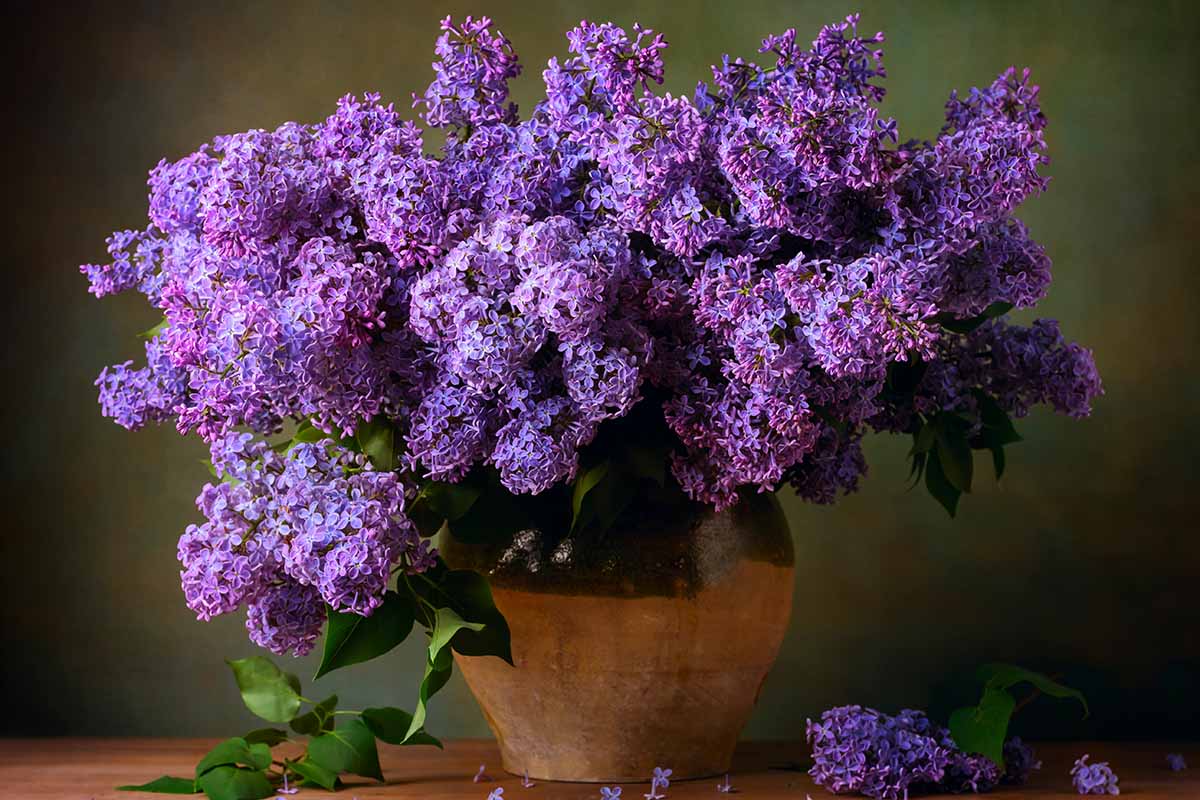Lilacs are known for their gorgeous, fragrant blooms in shades of purple pink white or blue. While they are traditionally grown in the landscape, it is possible to grow lilacs in containers as well. With the right pot, soil, watering, and care, you can enjoy the beauty and aroma of lilacs on your patio, balcony or deck.
Choosing a Pot
When selecting a container for lilacs, bigger is always better. Look for the largest pot you have space for, as lilacs have extensive root systems. For a dwarf lilac, choose a pot at least 16-18 inches wide. For larger lilacs, look for a pot 24 inches or larger.
Make sure the container has drainage holes in the bottom to prevent the roots from sitting in water Plastic, ceramic, resin and wood pots all work well Avoid unglazed terra cotta, which can dry out too quickly. Look for a pot that is wider than it is tall, as lilacs need more spread out roots than deep roots.
The Right Soil
Lilacs prefer a loose, nutrient-rich soil. A potting mix formulated for containers is a good choice You can also create your own mix by combining
- 1 part compost or composted manure
- 1 part peat moss
- 1 part perlite or vermiculite
Mix in a slow-release fertilizer like Osmocote to provide nutrients for several months. Add bone meal if soil tests indicate low phosphorus levels. The ideal pH range for lilacs is 6.5 to 7.0.
Planting Your Lilac
Start by putting an inch or two of gravel in the bottom of the pot for extra drainage. Place your lilac in the center of the pot, positioning it so the first set of branches is just above the soil line.
Fill around the roots with soil mix, firming it gently with your hands to remove air pockets. Leave an inch or two of space at the top of the pot. The crown where the roots meet the stems should sit just above the soil surface.
After planting, water thoroughly until water drains from the bottom of the container. Add a 2-inch layer of mulch around the base to help retain moisture.
Sun and Water
Lilacs need at least six hours of direct sun daily. A spot that receives afternoon sun is ideal. Insufficient sunlight will result in sparse blooms.
Check soil moisture frequently, watering whenever the top inch becomes dry. Add enough water so it drips from the drainage holes. Avoid letting the soil completely dry out.
Hot, windy weather or small containers may require daily watering. Add more mulch around the base over time to conserve moisture. Move pots to a shadier spot if leaves appear wilted at midday.
Pruning and Maintenance
To keep lilacs blooming well, prune each spring after flowering ends. Remove any dead or damaged branches. Also prune to control size and shape, as lilacs tend to grow rangy and open in containers.
Cut back leggy shoots to just above a bud or leaf node. Remove the oldest, tallest stems at ground level to encourage new growth. Aim for a rounded shape with the tallest branches in the center.
Fertilize in early spring each year before new growth begins. Use a balanced fertilizer with micronutrients, following label directions. Monitor for common pests like scale insects and borers. Apply horticultural oil or insecticidal soap if infestations occur.
In fall, stop fertilizing and decrease watering. The plant will drop its leaves and enter dormancy. Bring pots into an unheated garage or sheltered area once freezing weather arrives. Water very sparingly over winter.
Enjoying Lilacs in Containers
With proper care, dwarf lilacs can thrive for years in containers. You’ll be rewarded with their distinctively scented blossoms each spring. Plant different varieties for a longer bloom season. Move pots around so you can best enjoy the enticing fragrance from your patio, balcony or deck.
Planting Lilacs in Containers! Everything you need to know. I love this Shrub! //FlowerFanatic
FAQ
Do lilacs do well in containers?
Does lilac need full sun?
What is the best month to plant lilacs?
Can Lilacs grow in potting soil?
Lilacs can’t tolerate acidic soil, and most commercial potting soils contain at least some pH lowering peat moss. The best way to handle this is to add 1 cup (237 mL.) of dolomite lime to every 2 cubic feet (57 l.) of potting soil. Move your container to its final resting place before planting, since it will probably be very heavy when it’s full.
How to grow a lilac in a pot?
Keep reading to learn more about how to grow a lilac in a pot. Planting a lilac shrub in a pot is doable, but it isn’t ideal. Lilacs can get huge, and they grow best when their roots are free to spread out. When growing lilacs in containers, the first step is to pick a variety that stays relatively small.
How big should a lilac pot be?
For planting lilacs, you need to choose a pot at least 2 feet wide. Lilacs have very large root systems. Expect them to be as wide as the plant’s foliage or canopy, and choose a container that can accommodate rapid growth. When lilac roots are crowded, flowering will be reduced, and that defeats the purpose of featuring these beauties on the patio.
How do you grow lilac flowers?
Use neutral to alkaline soil for the best flower production. Keep the soil moist but not wet – lilacs can’t abide having roots that are sitting in water. If possible, also be sure to locate your containers where the fragrance can be most enjoyed, such as under windows, beside walkways, or on the patio.
- A Complete Guide to Caring for Yuki Cherry Blossom Shrub - January 23, 2025
- Identifying Red Hot Poker Seeds: What to Look For When Harvesting Torch Lily Pods - January 23, 2025
- A Complete Guide to Harvesting Evening Primrose Seeds - January 23, 2025

